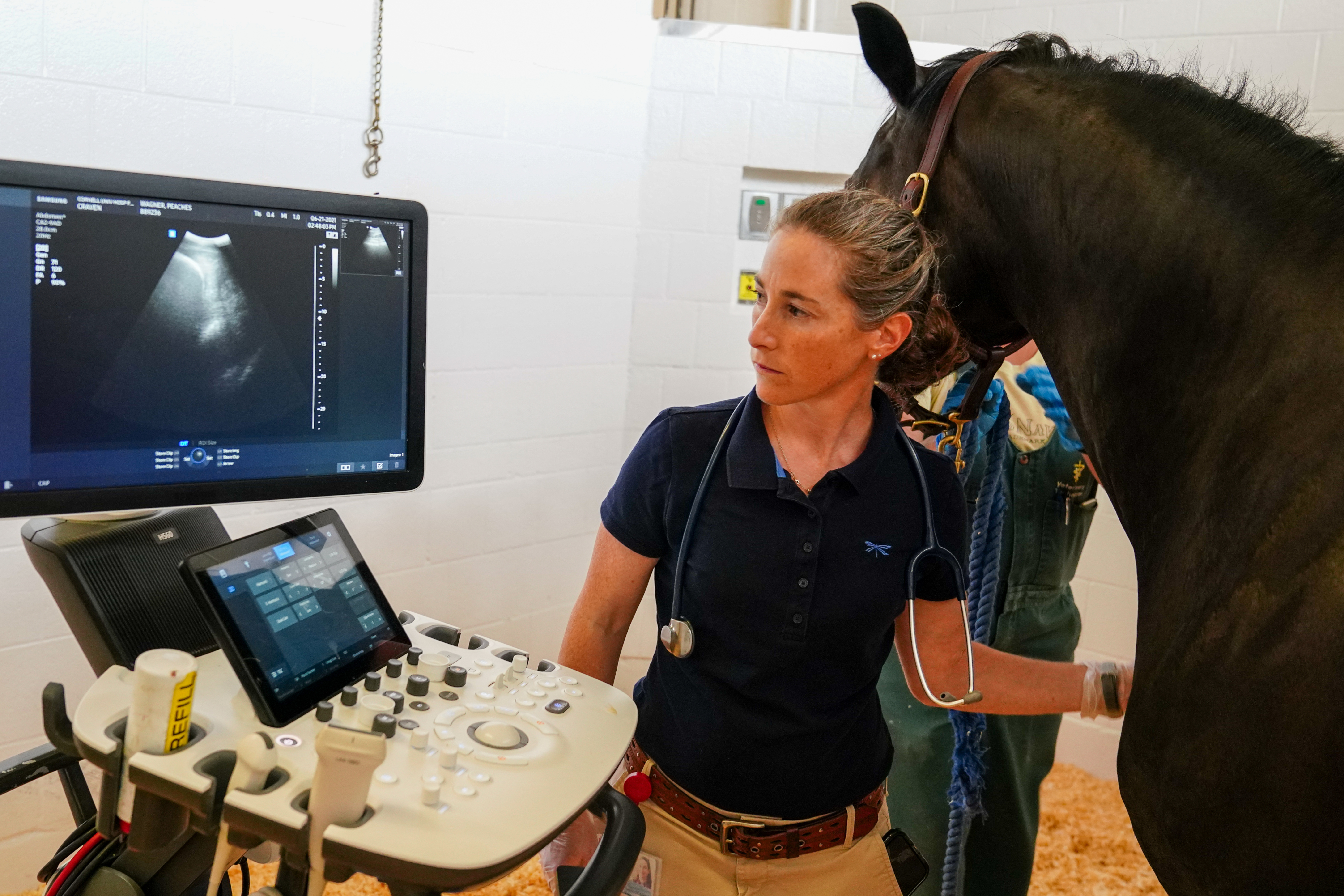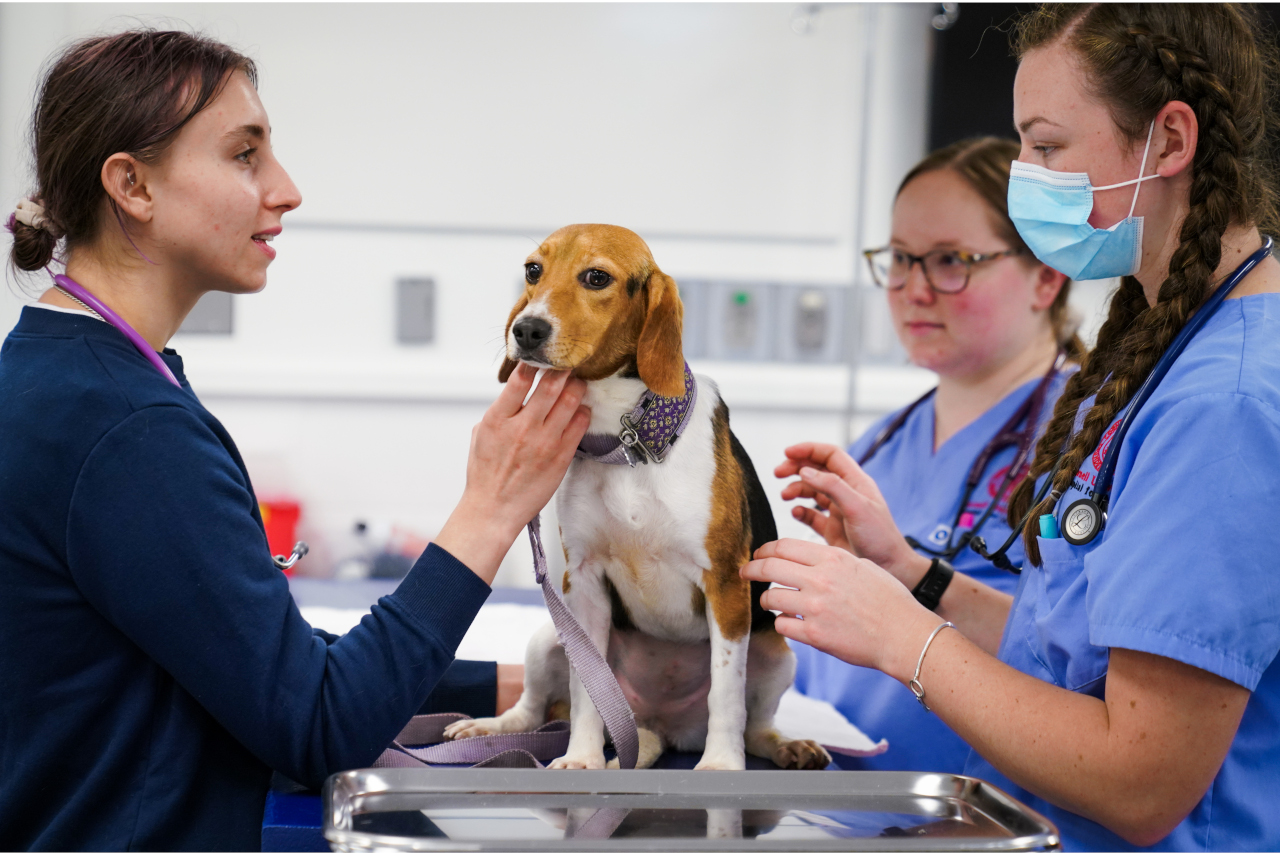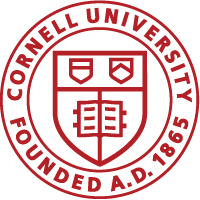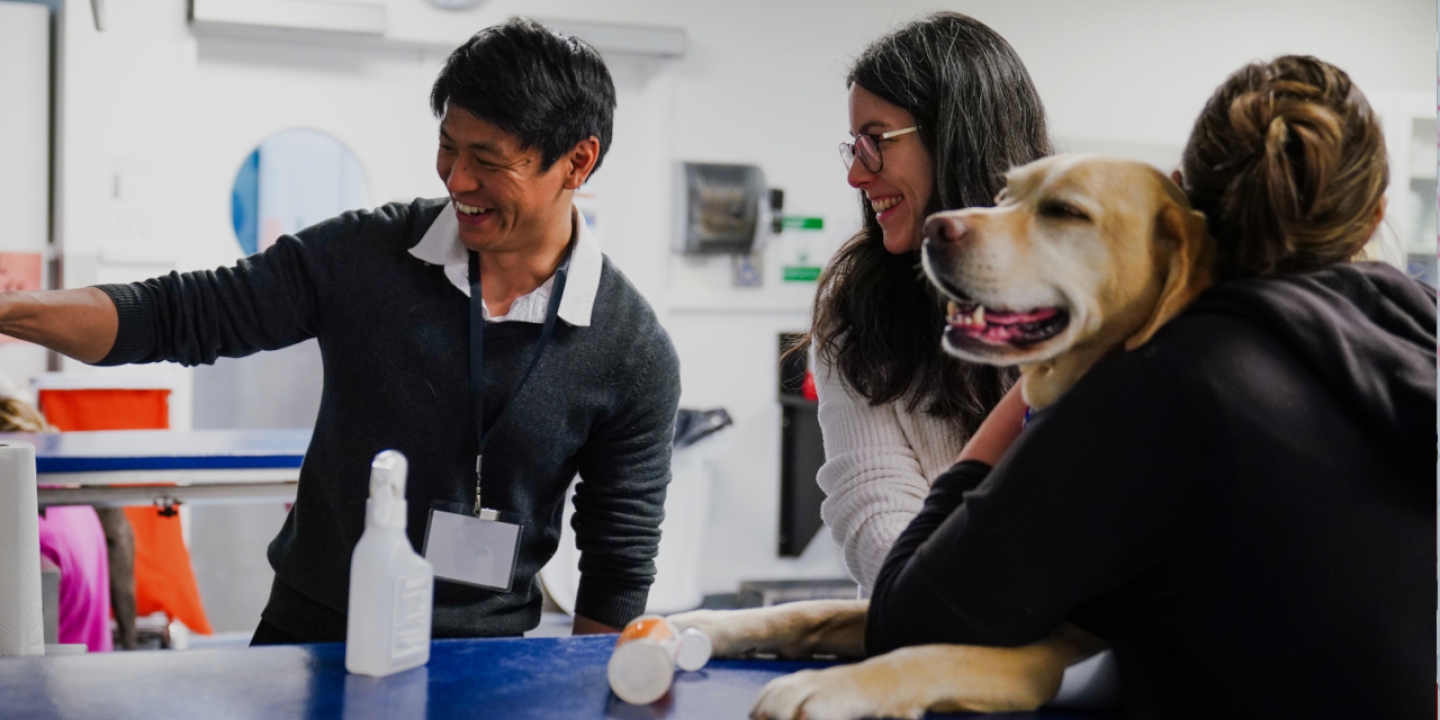Customized Learning Pathways
Course Structure
Our curriculum consists of approximately 70% foundation/core courses (required) and 30% elective courses.
This balance ensures that you receive a solid foundation in biomedical and clinical sciences through the foundation/core courses, while also enjoying significant flexibility to explore your interests with more than 80 distribution courses to choose from.
Elective courses are typically taken during the spring semester of your first, second, and third years.
Clinical Pathways
At the end of your second year’s spring semester, you will have the opportunity to choose one of the six clinical pathways comprising of career focused clinical rotations.

Elective Clinical Rotations
There are also opportunities to choose three elective rotations among those listed below and you may opt to arrange for some clinical experiences outside of the college.

- Theriogenology
- Cardiology
- Clinical Oncology
- Clinical Neurology
- Clinical Pathology
- Small Animal Dentistry and Oral Surgery
- Large Animal Emergency Critical Care
- Primary Care Surgery Service
- Behavior Medicine Service
- Cornell Ruffian Equine Surgery, Medicine and Emergency Service
- Small Animal Urgent Care
- Lab Animal Medicine
- Equine Health Management
- Clinical Rotation in Shelter Medicine
- Clinical Sports Medicine and Rehabilitation
- Wildlife Medicine
- Clinical Exotic Animal Service
- Special Opportunities in Clinical Veterinary Medicine
- Special Topics in Ambulatory and Production Animal Medicine
Teaching Projects, Special Projects, and Research Projects
You can design customized learning projects to work directly with our faculty on research, teaching, and other areas of interest.
You can also to take for-credit courses during winter and summer terms through programs such as the Expanding Horizons and international field trips with FARVets.



